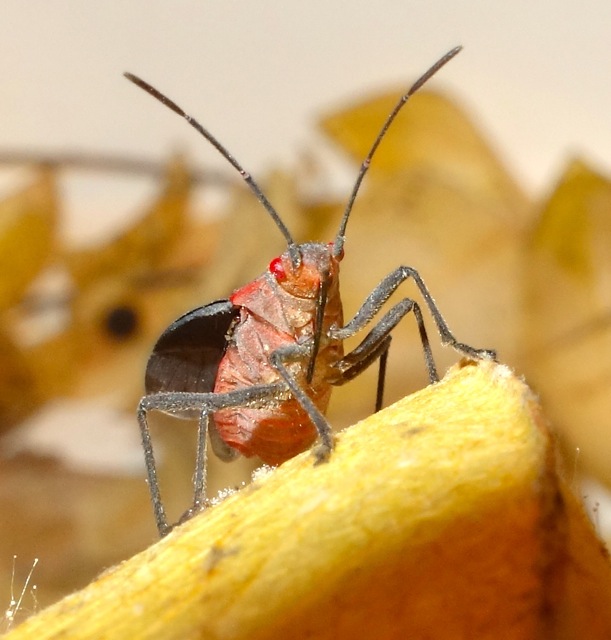
This Central American species has been reported from Mexico to Panama, but nothing has ever been reported about its biology. Scott Carroll observed it in March of 2014 feeding and reproducing on seeds from open fruit capsules of the large-flowered balloon vine, Cardiospermum grandiflorum, at two sites in Costa Rica.
The first site, San Luis, is near Monteverde, but at a lower elevation below the limits of the cloudforest, at about 1,100 meters. The second, near Jaco Beach, is just above sea level on the Pacific Ocean. These bugs have small beaks, unlike most balloon vine specialists. Perhaps, during other seasons, members of their population also feed on the seeds of the abundant balloon vine relatives in the genera Serjania and Paullinia. Species in these genera lack inflated seed defenses and can be reached by short-beaked bugs.
It is notable that the balloon vine capsules on which these bugs feed are much more elongated, rather than spherical as in most populations. That makes the seeds closer to the capsule walls, but still out of reach for short-beaked bugs. As a result, the seeds are placed on thin oval wings ('flying carpets') rather than round ones. No one has ever investigated the dispersal efficiency of balloon vine seeds flying on carpets of different shapes. Is carpet shape constrained by bug beak length?


